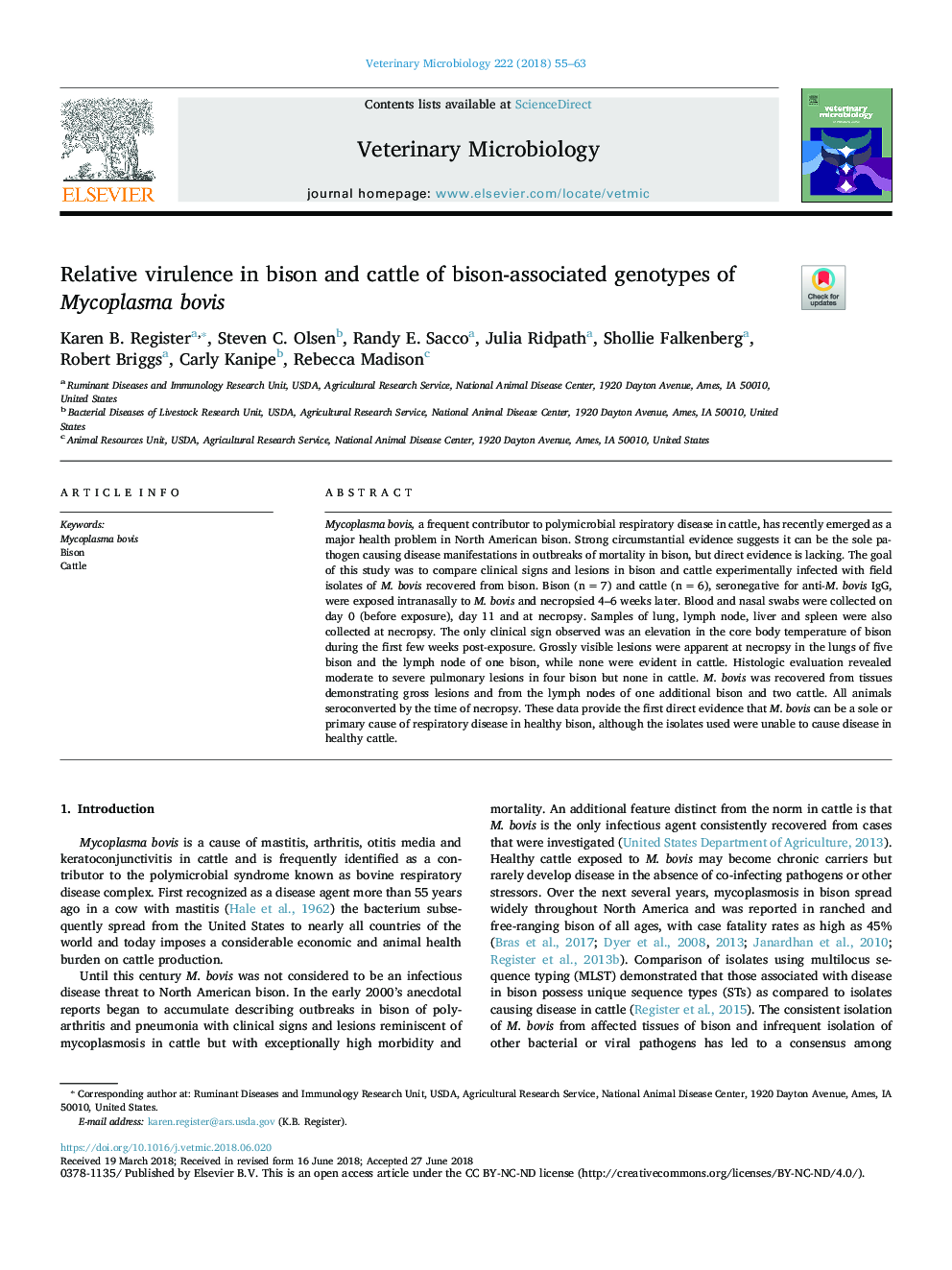| Article ID | Journal | Published Year | Pages | File Type |
|---|---|---|---|---|
| 8505149 | Veterinary Microbiology | 2018 | 9 Pages |
Abstract
Mycoplasma bovis, a frequent contributor to polymicrobial respiratory disease in cattle, has recently emerged as a major health problem in North American bison. Strong circumstantial evidence suggests it can be the sole pathogen causing disease manifestations in outbreaks of mortality in bison, but direct evidence is lacking. The goal of this study was to compare clinical signs and lesions in bison and cattle experimentally infected with field isolates of M. bovis recovered from bison. Bison (nâ¯=â¯7) and cattle (nâ¯=â¯6), seronegative for anti-M. bovis IgG, were exposed intranasally to M. bovis and necropsied 4-6 weeks later. Blood and nasal swabs were collected on day 0 (before exposure), day 11 and at necropsy. Samples of lung, lymph node, liver and spleen were also collected at necropsy. The only clinical sign observed was an elevation in the core body temperature of bison during the first few weeks post-exposure. Grossly visible lesions were apparent at necropsy in the lungs of five bison and the lymph node of one bison, while none were evident in cattle. Histologic evaluation revealed moderate to severe pulmonary lesions in four bison but none in cattle. M. bovis was recovered from tissues demonstrating gross lesions and from the lymph nodes of one additional bison and two cattle. All animals seroconverted by the time of necropsy. These data provide the first direct evidence that M. bovis can be a sole or primary cause of respiratory disease in healthy bison, although the isolates used were unable to cause disease in healthy cattle.
Keywords
Related Topics
Life Sciences
Agricultural and Biological Sciences
Animal Science and Zoology
Authors
Karen B. Register, Steven C. Olsen, Randy E. Sacco, Julia Ridpath, Shollie Falkenberg, Robert Briggs, Carly Kanipe, Rebecca Madison,
